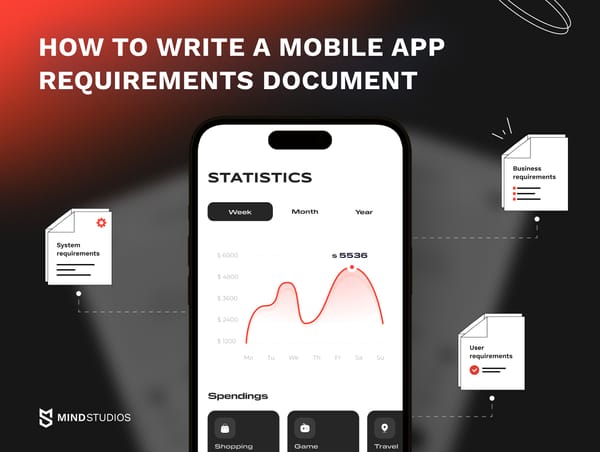Digital products integrated into real-world environments can exert a range of influences, from enhancing individual user experiences to boosting the profits of an organization that launches them. In healthcare software, 'impact' takes on various meanings for different stakeholders.
At Mind Studios, we view impactful healthcare software development as placing humans — primarily patients and healthcare professionals — at the core of our approach. This article is dedicated to exploring precisely that.
To positively impact the healthcare industry in general, the development teams have to prioritize the users' needs, security, and empowerment opportunities. And while it’s easier said than done, there are ways to effectively navigate the field-specific challenges and deliver software that makes a difference.
Using our experience with the healthcare industry, we’ve crafted a guide through best practices to turn to when building software that goes beyond technology and strives to serve patients, healthcare professionals, and other stakeholders involved.
Defining the vision
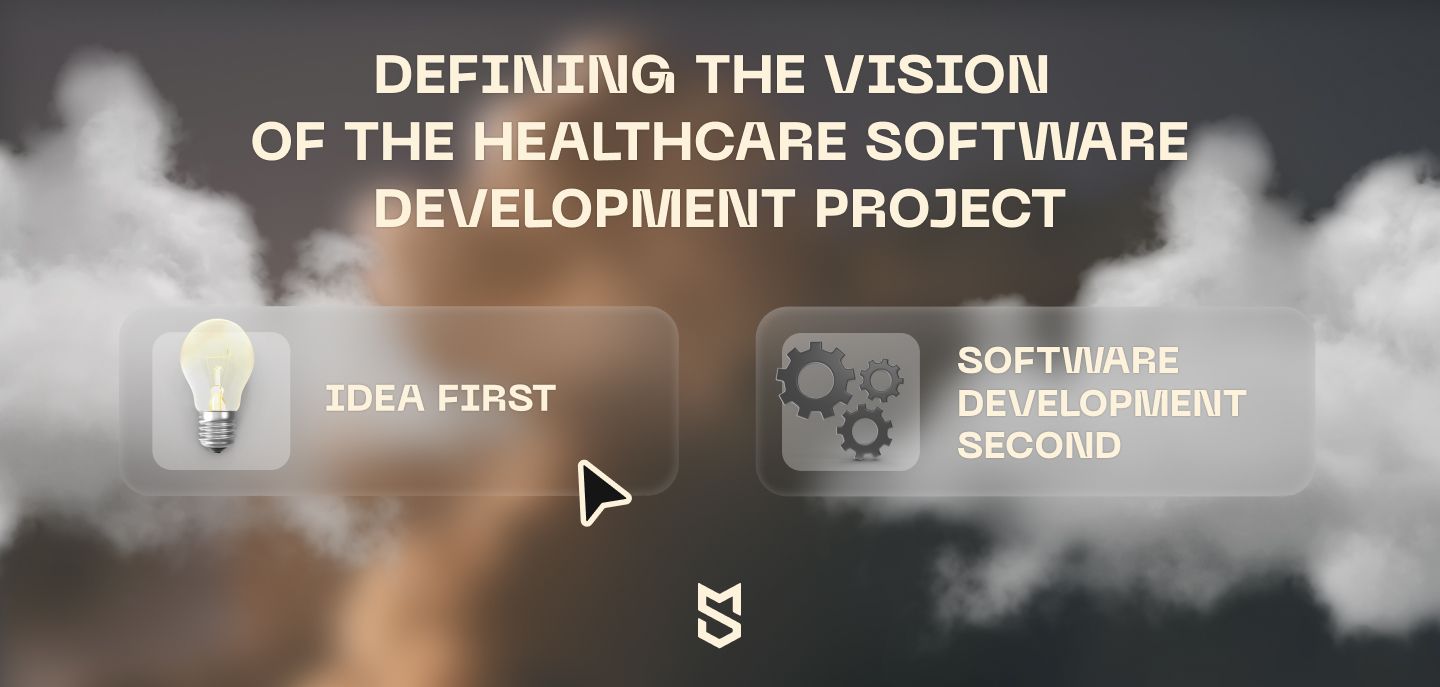
The idea to create a HealthTech product often starts with an aspiration to make a platform that serves a purpose, whether it’s making the workflow more bearable for medical workers or delivering accessible, high-quality healthcare services to patients. However, according to data from Statista, around 80% of tech startups in the healthcare industry fail. For comparison, the failure rate for FinTech startups is 75%, and for EdTech startups — 60%.
So, why is there such a small chance of succeeding for businesses in HealthTech? According to CBI Insight, in 42% of cases, the primary reason startups fail is misreading market demand. With HealthTech products in particular, the reasons also include a lack of clearly determined value proposition and a wrong choice of evidence strategy.
Defining a clear vision is the essence of any journey: setting up on a road trip without a clear destination might be fun until you struggle to navigate the obstacles you were neither aware of nor prepared for. The same goes for developing impactful healthcare software: unless you know the final destination and the steps it requires, the whole endeavor will be pointless (and money-draining).
The first thing we recommend the project initiators do is craft a vivid, all-encompassing picture of the desired future state of healthcare delivery — and the role of their software in it. To be more specific, this vision definition process should involve:
- Getting an in-depth understanding of the key stakeholders’ needs, including those of patients and healthcare professionals (HCPs)
- Determining and addressing the challenges of the project
- Outlining a compelling direction by defining the project’s purpose, values, goals, and desired impact
Defining the vision isn’t a business strategy yet. However, it is the foundation of an impactful HealthTech product since it proves one is committed to building a better, more compassionate healthcare future, and that’s a good enough starting point.
Understanding the healthcare software solution landscape
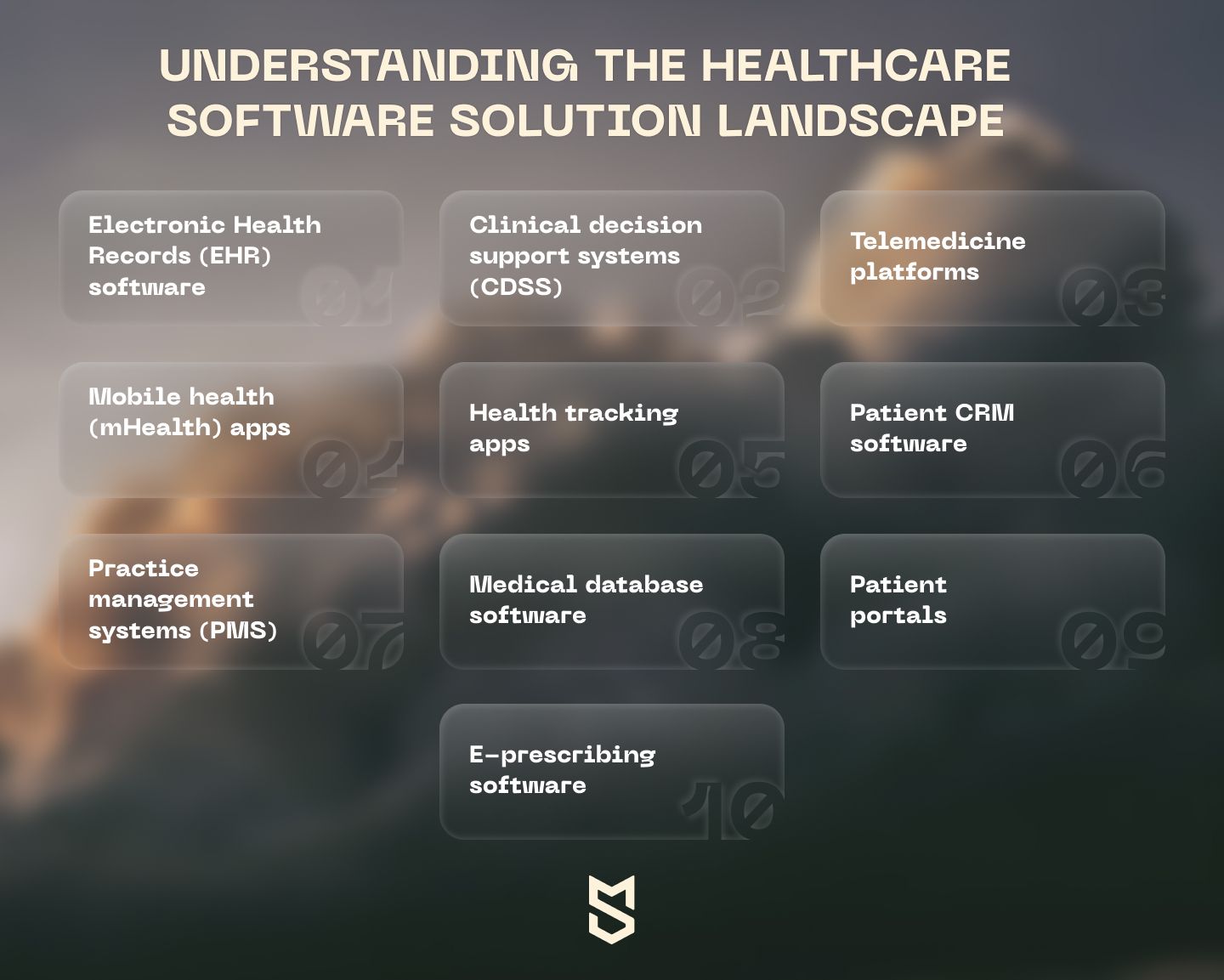
When the vision question is all set, organizations can move on to building a strategy that will help them fulfill their aspirations. While vision is the core of your future HealthTech product, you need to ensure it will fit into the market. For that, studying the current healthcare software landscape and finding the gaps your idea can fill is essential.
While the healthcare software ecosystem comprises dozens of solutions, we’ve made a list of the most widespread ones:
- Electronic Health Records (EHR) software: Digitized and centralized patient medical records for easy yet secure access and efficient management by different healthcare providers.
- Clinical decision support systems (CDSS): Real-time data analysis and recommendations to assist HCPs in making informed patient care decisions.
- Telemedicine platforms: Remote healthcare consultations and monitoring, resulting in enhanced healthcare accessibility.
- Mobile health (mHealth) apps: Healthcare services and essential information available on mobile devices, which promotes health awareness and encourages patients to play an active part in managing their health.
- Health tracking apps: Assistance with monitoring and managing health metrics like fitness, nutrition, sleep, and chronic conditions.
- Patient CRM (customer relationship management) software: Assisting healthcare providers in building and maintaining trustworthy and solid patient relationships, enhancing patient engagement.
- Practice management systems (PMS): Streamlined administrative tasks and medical practice management, including appointment scheduling, billing, inventory management, etc.
- Medical database software: Organization and management of medical data to ensure its secure and efficient storage and retrieval.
- Patient portals: Secure access to personal medical records, appointment scheduling, and communication with healthcare providers.
- E-prescribing software: Enabling healthcare providers to electronically generate and transmit prescriptions to pharmacies, enhancing prescription accuracy.
The fact that these healthcare solutions are widespread doesn’t mean there is no place for a new product. However, HealthTech organizations do have to put in extra effort to find the right niche and come up with software that would be valuable to prospective users. For instance, there might be an abundance of health tracking apps, but your product can be different by addressing specific pain points of people with various health conditions or well-being goals.
When starting out with a HealthTech startup, it’s essential to remember that the problem-solving component of the product is more important than technology. Here are two quotes from entrepreneurs in the industry who back this theory up.
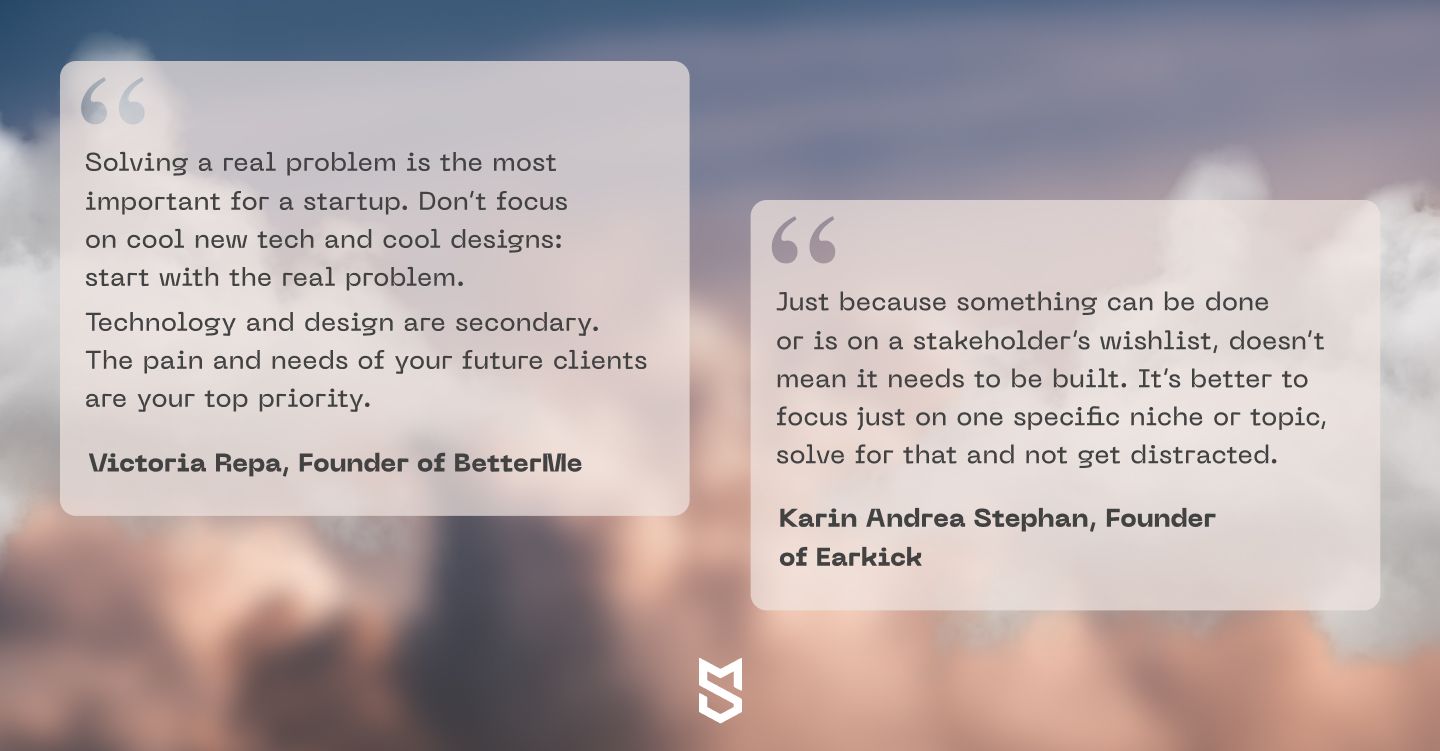
[Source: Health Tech World]
User-centered design principles in healthcare software development
Putting humans at the center of the development process entails doing so throughout every step of the way, including the UI/UX design phase. In the case of medical software design, this typically means working closely with healthcare providers and patients, tailoring the solutions to their needs, preferences, and workflows. Let’s take a look at the core user-centered design principles we recommend following:
- Empathizing with users through meticulous research of their unique needs and challenges in order to see the software from their perspective
- Collaborating with intended users throughout the design and development process
- Aligning the software with the existing workflows of healthcare professionals
- Prioritizing usability and ease of use, making software intuitive, and requiring minimal training
- Enabling data visualization functionality to present complex information in a clear and organized format
- Ensuring accessibility so that the software serves users with disabilities
- Incorporating feedback mechanisms for users to report issues and suggest improvements
- Ensuring proper training and onboarding for the users
The most obvious benefits of following the user-centered approach are enhanced user experience and reduced design flaws and errors, all of which contribute to improved patient outcomes. However, there is another extremely compelling argument to adopt it: user-centered design directly increases the chances of the solution being adopted by intended users.
Let’s say a team of UI/UX designers is developing medical software to streamline nurses' workflow. However, they do it solely based on their tech expertise, without checking their hypothesis with actual nurses. As a result, the team misses out on the opportunity to gain valuable insights into details like clinical processes and hierarchy, pressing timelines, understaffing challenges, etc. If the software doesn’t fit into the clinical environment or in any way slows down the nurses, it simply won’t become part of their routine. Hence, the project will fail.
Unsurprisingly, some of the most successful HealthTech products were created by people who know what it’s like to be a part of the healthcare ecosystem. For instance, Ada< is a global health company founded by doctors, scientists, and industry pioneers who aim to improve health outcomes and offer new possibilities for personal health.
Dr. Claire Novorol, the company’s co-founder and chief medical officer, used to work as a pediatrician. Tauseef Mehrali, Ada’s VP of medical safety and regulatory affairs, is a practicing NHS doctor. The list goes on. To give you the perspective on how successful the company is, its symptom assessment app has 10 million users, with someone turning to Ada for health guidance every three seconds.
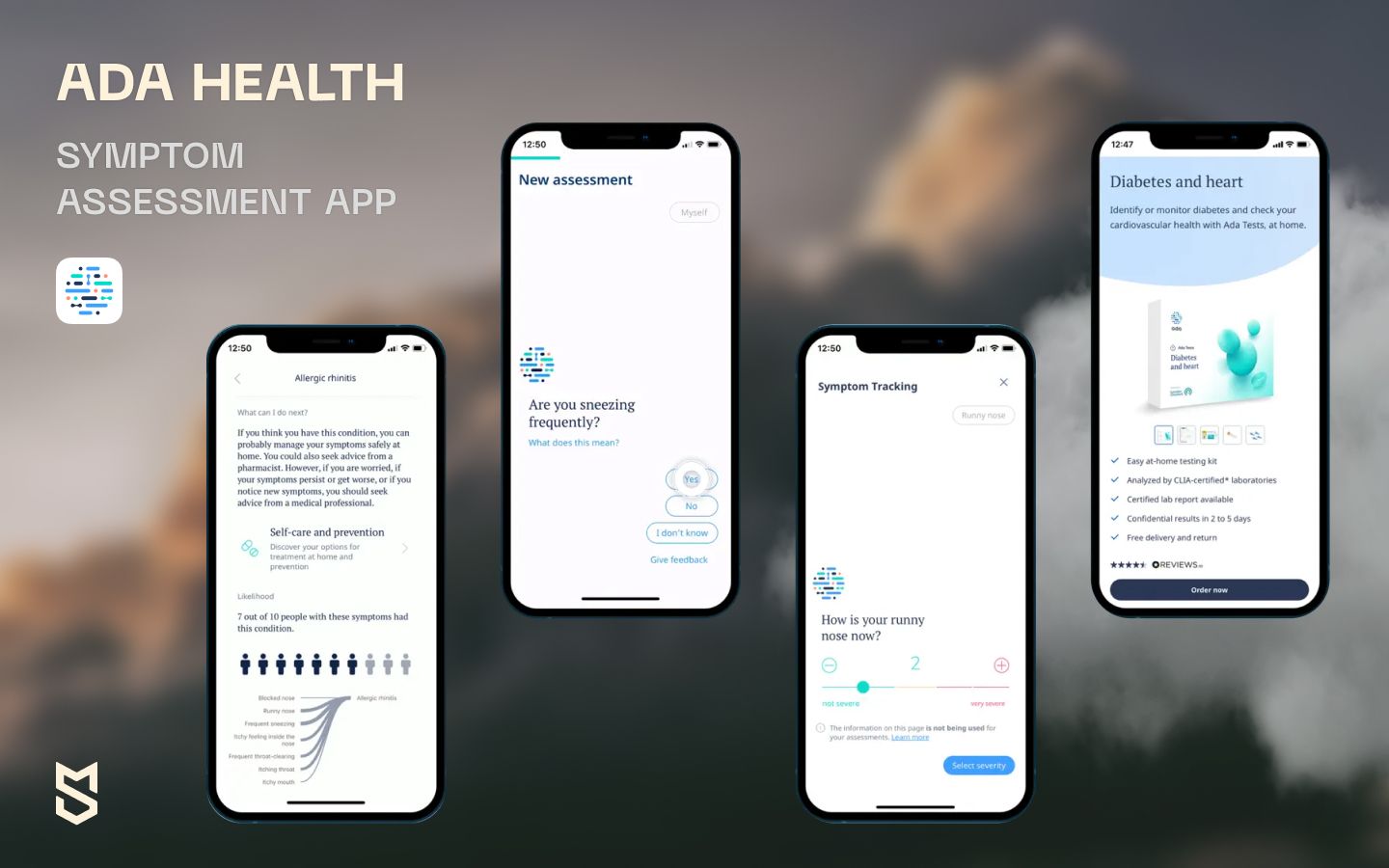
At Mind Studios, we’ve also had the chance to collaborate with medical professionals for healthcare software product development. In fact, two of such projects were founded by the same person, a practicing doctor who also teaches at UCSF. After years of successfully running the first HealthTech startup we helped him build, our client exited the project only to start another with Mind Studios by his side once again.
Of course, you don’t necessarily have to be a medical expert yourself to create thriving software products for the healthcare industry. However, you do have to involve such experts, as well as patients, in the development process. Here are the core user research and feedback-gathering methods that will help you do that.
- Surveys and questionnaires: Gathering insights through surveys helps identify pain points and user preferences, and thus make data-driven decisions on the product’s functionality and other developmental aspects.
- User interviews: Conducting one-on-one interviews with medical workers, patients, and other stakeholders helps the development team create more efficient solutions that address the intended users' specific needs and pain points.
- Observational studies: Monitoring the workflow of healthcare professionals in real clinical environments can provide valuable context for hospital software development, creating telemedicine platforms, workflow automation systems, remote patient monitoring solutions, etc.
- Usability testing: Running usability tests with a group of target users helps identify usability issues and areas for improvement, allowing the development team to refine the software.
Following these methods is a good starting point for healthcare software development companies committed to empathizing with the end users and providing them with truly user-centered solutions, ultimately enhancing the healthcare experience for all parties involved.
Best practices for impactful software development in healthcare
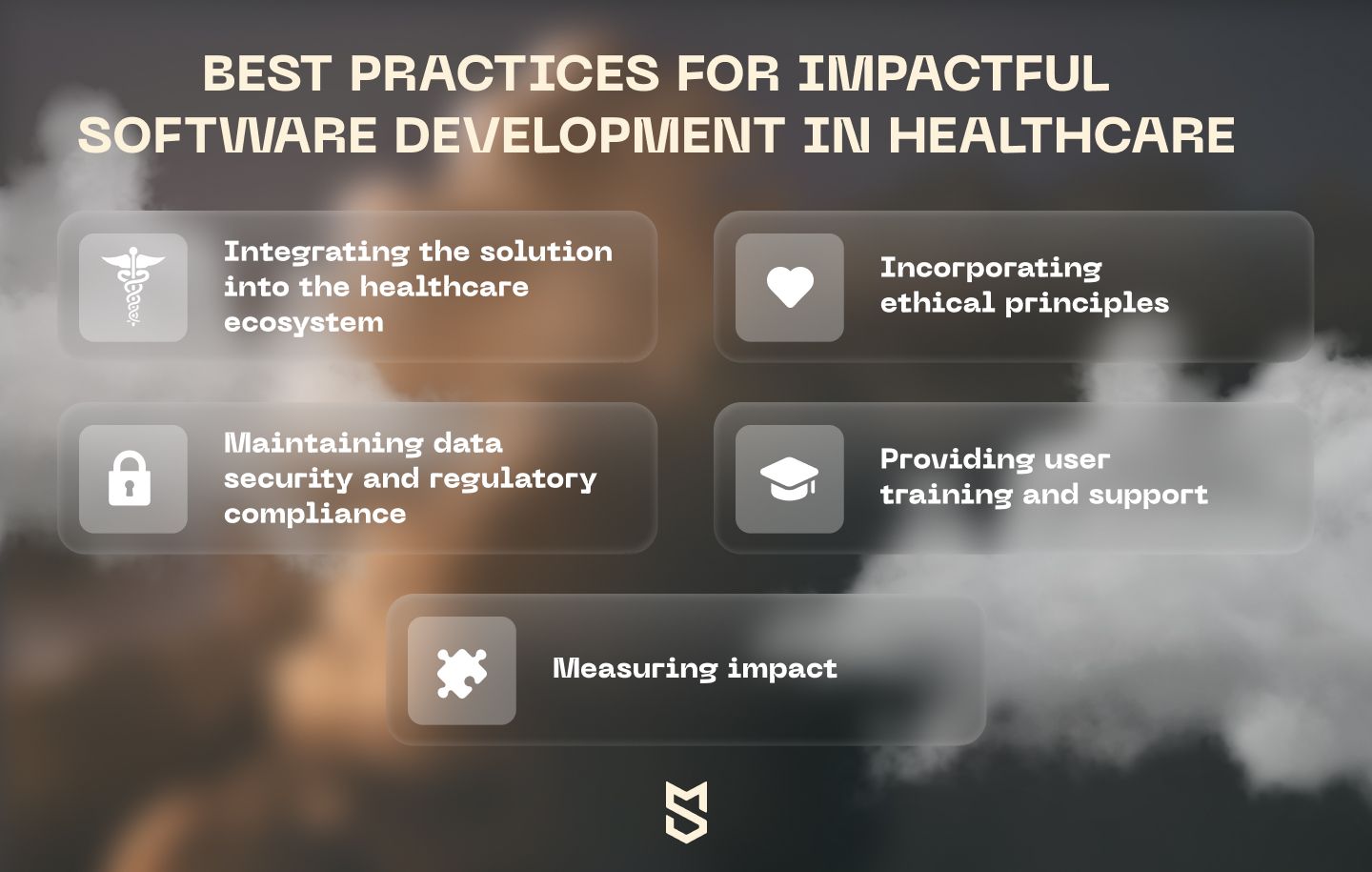
Building healthcare software that makes an impact comes with navigating numerous challenges of the industry. Nonetheless, by sticking to the practices mentioned in this section, healthcare organizations increase the chances of their solution being effective, trustworthy, and thus accepted by the intended users.
Integrating the solution into the healthcare ecosystem
Ensuring the seamless integration of healthcare software into the existing digital ecosystem and adhering to interoperability standards must be a task of the highest priority since it directly impacts the efficiency of care delivery.
Healthcare software systems are complex and interconnected, involving multiple stakeholders like hospitals, laboratories, pharmacies, etc. Following interoperability standards enables secure and efficient exchange of critical patient information, which empowers healthcare professionals with comprehensive medical data essential for informed and timely decision-making. Smooth software integration also helps promote patient safety, reduce errors, and foster better provider collaboration.
To achieve a smooth fusion of healthcare software systems, the development team needs to:
- Get an in-depth understanding of the existing healthcare software ecosystem, including its databases, data formats, etc.;
- Identify interoperability requirements of the software, including data sharing, communication protocols, and integration points;
- Adopt standardized healthcare data standards like HL7 (Health Level Seven) or FHIR (Fast Healthcare Interoperability Resources) to ensure data consistency and compatibility;
- Utilize APIs that adhere to industry-standard protocols like SOAP to facilitate seamless data exchange and interoperability;
- Use data mapping and transformation tools to convert data between different formats, ensuring seamless integration with different systems;
- Maintain detailed records of the software's interoperability configurations.
Maintaining data security and regulatory compliance
There is a reason why the healthcare industry is one of the most highly regulated ones. Organizations that don’t comply with data security and privacy standards jeopardize patient safety by exposing sensitive medical information, often leading to identity theft or fraud. As a result, they can face severe legal penalties and fines, not to mention reputational losses.
Impactful healthcare software is the one users can entrust with their data. To safeguard information and ensure compliance with healthcare regulations like HIPAA, the development team must:
- Implement strong encryption protocols;
- Enforce strict access controls and implement role-based permissions so that the system can be accessed by authorized personnel only;
- Maintain detailed audit logs that record all user activities and access to patient data;
- Conduct risk assessments and vulnerability checks to identify and mitigate potential security threats;
- Adopt secure coding practices to reduce the risk of vulnerabilities;
- Implement data backup and recovery procedures to prepare for possible system failures or cyberattacks;
- Develop an incident response plan to address security breaches promptly and minimize damage;
- Conduct regular security audits and assessments;
- Validate the security practices of third-party vendors and service providers;
- Maintain records of security practices, audits, and compliance activities.
Incorporating ethical principles
Trust is one of the core bricks in the foundation of healthcare software, and it directly affects whether the product will become widely accepted. Since healthcare software typically involves handling sensitive patient data, organizations and their development teams must adopt certain ethical principles. In addition to implementing robust data privacy and security measures, this also entails:
- Ensuring transparency in all aspects of software development, from data collection to decision-making processes;
- Obtaining informed consent from users before collecting and utilizing their data;
- Creating software functionality that empowers users to control their data and preferences;
- Addressing and mitigating biases that may exist within algorithms or data sources to ensure fair and equitable treatment of all users and patients;
- Conducting regular ethical reviews of software features and practices;
- Providing training for development teams on ethical principles and considerations in healthcare software development;
- Educating users about the importance of data privacy, informed consent, and ethical considerations.
Providing user training and support
Primarily, ensuring the intended users adopt the software involves creating intuitive UI/UX design. However, healthcare solutions can be complex due to the specifics of their functions, especially when it’s software for medical workers. Therefore, the development team can provide training and support to empower HCPs to effectively use the platform and ensure it fulfills its intended purpose. Here's a list of basic steps to ensure user training and support:
- Providing comprehensive user guides that explain how to use the software step by step;
- Offering online tutorials, webinars, workshops, and educational resources for the users;
- Establishing a dedicated support team to address user inquiries, issues, and technical problems promptly;
- Creating opportunities for users to provide feedback, ask questions, and seek advice from peers and experts;
- Encouraging users to provide feedback on their experiences, which can inform improvements and future software updates.
Measuring impact
In software development, impact is something that can and should be measured, at least if you are truly committed to addressing the users’ needs. By doing so, the development team can effectively identify areas for improvement, refine features based on user feedback, enhance the quality of user experiences, and achieve the project's initial goals. To measure the impact of their solutions, healthcare organizations and their development teams need to:
- Establish KPIs that align with the software's goals, such as improved treatment plans, more accessible healthcare services, reduced error rates, etc.;
- Collect user feedback to evaluate their experiences and identify areas for improvement;
- Monitor usage metrics to track how frequently and effectively the software and its features are used in healthcare settings;
- Evaluate the impact of the software on clinical outcomes like treatment adherence, diagnostic accuracy, etc.;
- Compare software performance against the predefined KPIs and goals to adjust the strategy accordingly if needed.
Mind Studios' experience
Building software that serves a purpose is at the core of Mind Studios' approach to software development. Therefore, we strive to partner with like-minded entrepreneurs. While we work closely with various healthcare projects, for this particular article, we decided to focus on a mHealth app that combines features of health and wellness, meditation, and performance-tracking platforms.
Envol is an effective support app for people going through a healing journey, whether it involves recovering from an injury or a chronic illness or simply finding a way to a more fulfilled and healthy life.
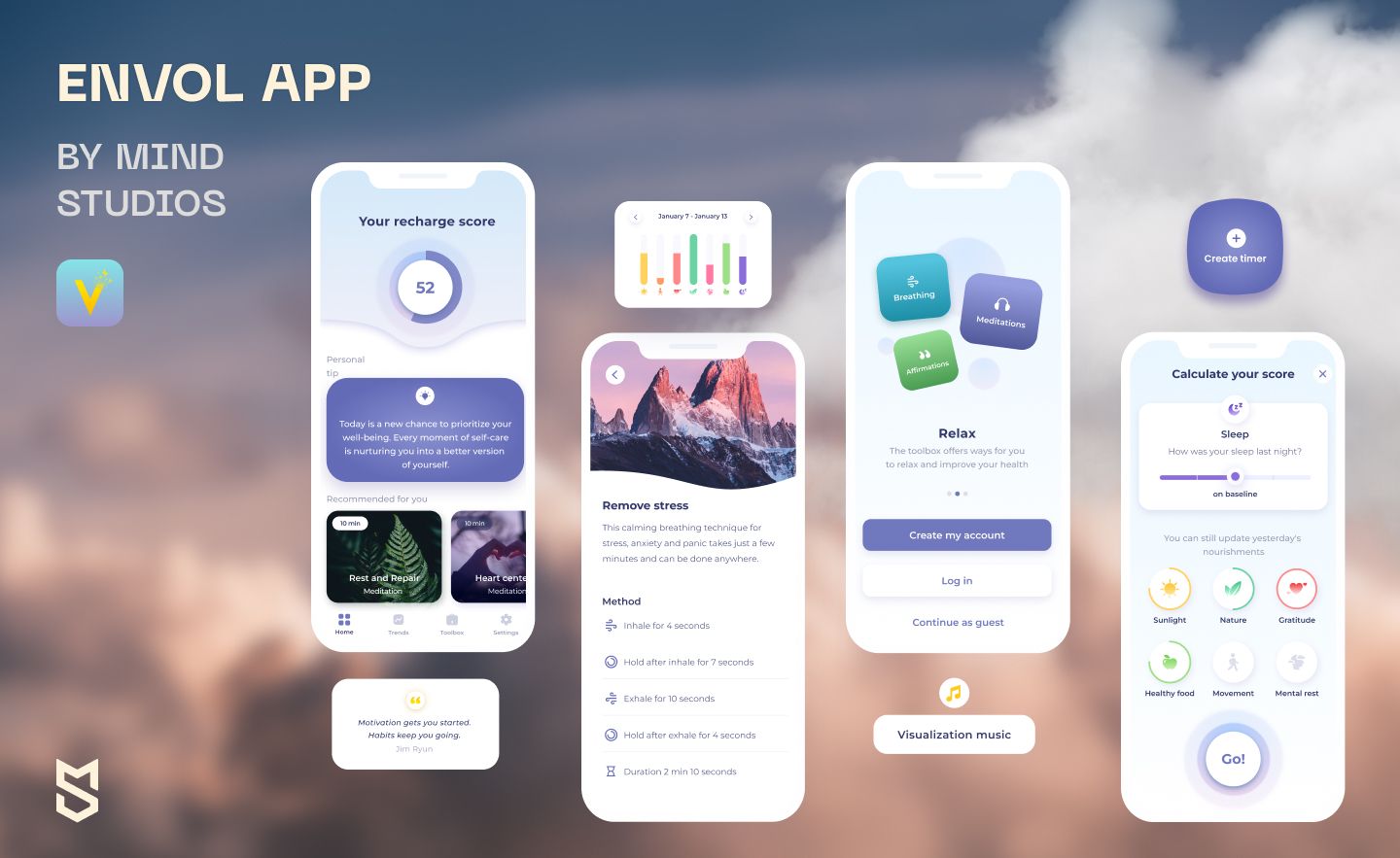
The app guides its users through various holistic practices that are based on maintaining the conditions the Envol team calls “nourishments.” These include sunlight, healthy food, contact with nature, emotions, and a proper balance between physical activity and mental rest. These aren’t just theoretically beneficial practices, though.
Behind the app, there is meticulous research and cooperation with healthcare professionals. For instance, among numerous sources Envol used for incorporating its holistic practices are the International Institute of Anticancer Research, The American Journal of Clinical Nutrition, the National Center for Biotechnology Information, and dozens of works by scientists and medical professionals.
Since one of the essential practices in building impactful software is measuring impact, that’s exactly what the Envol team did. In July 2021, they conducted a 4-week study on 220 participants to assess Envol's effects on health, energy, and well-being. This helped the team establish which practices helped the users improve their health and mood, boost energy, decrease symptom severity, and enhance productivity.
Just as Envol creators continue to monitor their app's effects on over 8 thousand active users, our development team continues to track users’ feedback on the tech side of the platform and enhance it with the functionality the audience expects.
Conclusion
The decision to build an impactful and mindful healthcare platform shows commitment to making a difference not only in the tech field but in the healthcare industry in general.
As the world becomes increasingly digital, software solutions have the potential to finally bridge the gaps of inaccessibility within the healthcare systems and empower patients, medical workers, and other stakeholders. Software development for healthcare can become more than a tech-related task but a deeply empathetic mission to ensure no one involved in the medical system is left behind.
Whether you’ve already decided to embark on this journey or are just exploring the options, Mind Studios is ready to help you. As providers of healthcare software development services, we can help you find and build solutions that will help you fulfill your organization’s purpose and contribute to the evolution of the healthcare industry. Fill in a short contact form, and our business development team will arrange a free consultation to discuss your custom software development needs.

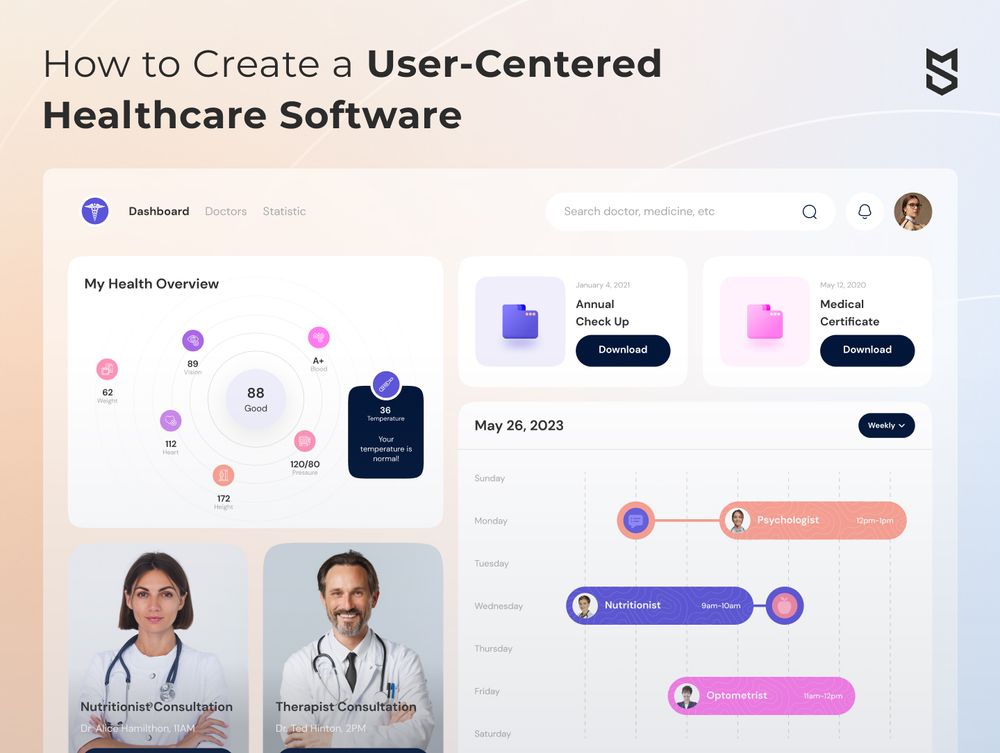
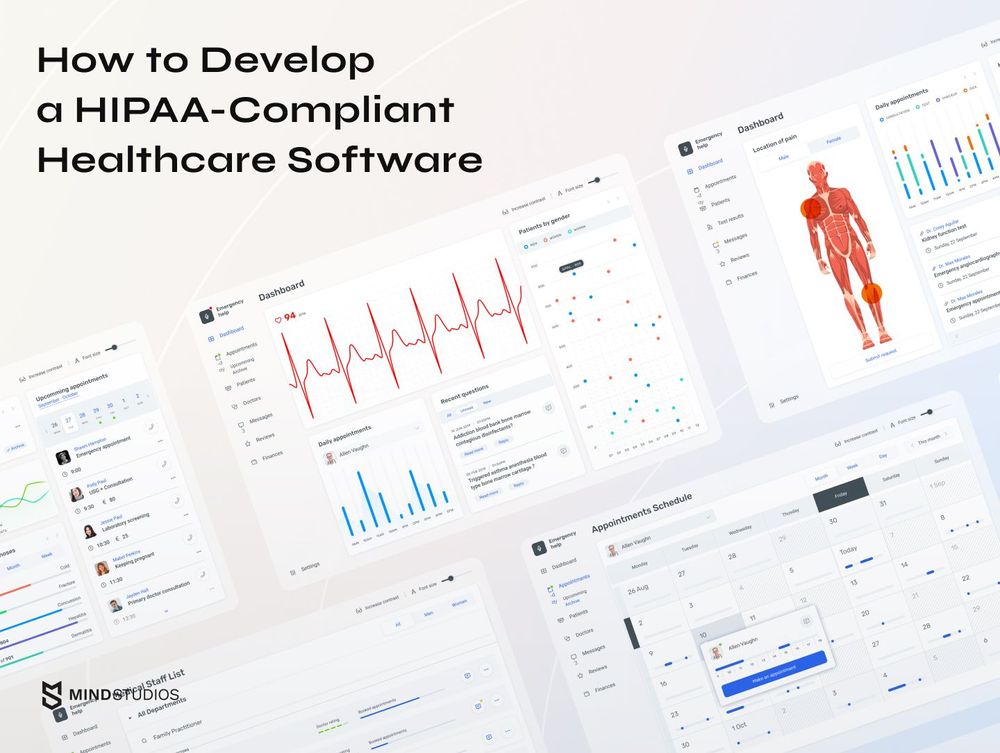
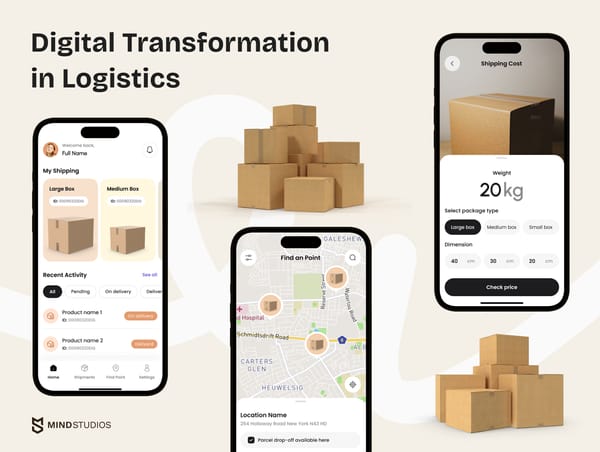

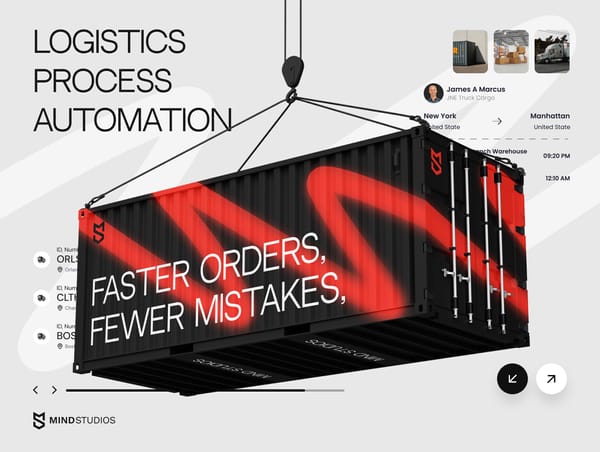
![How to Create an On-Demand Medicine Delivery App [Expert Guide]](https://themindstudios.com/blog/content/images/size/w600/2025/03/IMG-1-Cover-6.jpg)

